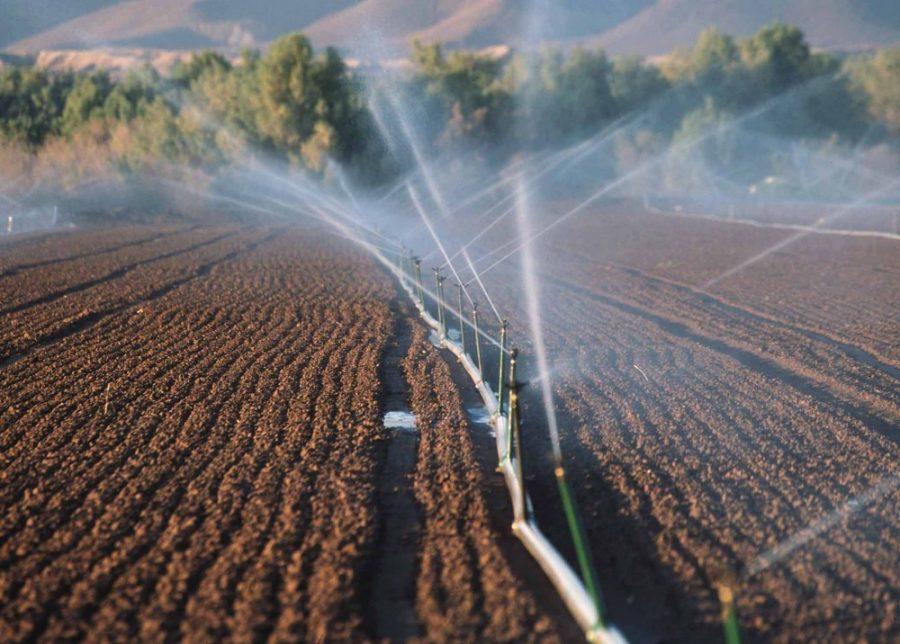Global climate change, urban sprawl and finite resources keep adding weight to the shoulders of the agricultural community. However, even in the face of drought, experts say strong Arizona farming operations will continue well into the future.
Sharon Megdal, director of the Water Resources Research Center, explained that Arizona primarily uses two types of water supplies — surface water and ground water — and both supplies are in a messy situation.
One of the main contributors of surface water, the flow of the Colorado River, was divided up amongst seven states — including Arizona — and Mexico many years ago.
The water managers who designed the division based it on current flow, and from that projected the flow for many years to come, Megdal said.
However their projections were based off of one of the wettest periods in recent history, so they are no longer relevant today, three years into a drought, experts say.
Experts agree that the infrastructure of our state is outdated and needs to be reformed, immediately.
“”Potentially we have over-allocated surface water, and ground water has been over-drafted, or over-pumped,”” said Megdal.
Only a small portion of the land in Arizona is used for agriculture, however that use accounts 70 to 80 percent of the states water resources. As water becomes more expensive the agricultural community may see some shifts in operations within the next 50 years.
“”To keep growing costs down, farmers will most likely move away from planting the types of crops that use the most water, like cotton and alfalfa,”” said George Frisvold, specialist in Agriculture and Resource Economics. “”And crops that produce the higher revenue, like lettuce, cauliflower, and melons will be the primary source of income.””
The total cash receipts from farming operations in 2008 totaled $3.4 billion.
“”Agriculture contributes a pretty good portion to Arizona’s overall economy not in just total revenue, but a ripple effect throughout the state,”” said Jeff Silvertooth, department head for Soil and Water and Environmental Science.
During the winter months, Yuma Valley is the epicenter for winter lettuce, and the chief supplier to the western United States. “”The farming of crops like that in Arizona will not see a change,”” Frisvold said.
Water shortages in the near future will raise the cost of an agricultural operation, and some farmers may find selling their land as a better means to an end.
“”Growers reserve the right to sell their land to developers if that will give them more money than trying to grow on it,”” said Frisvold. “”They don’t have a retirement plan given to them. Their one asset is the agricultural land that they are sitting on. For them, that’s their retirement nest egg.””
Agricultural operations in Arizona have been given senior rights when it comes to water supply, meaning the state cannot tell them to stop using the water they already are, Megdal said.
“”If agriculture were to diminish over time it would not be because the state said so, but either from market forces or voluntary selling of land,”” she said.
If the agricultural community makes severe shifts within the next 50 years, experts say this would be bad news for how the urban community deals with a drought.
In a city community, Frisvold said, the demand for water is not very flexible, meaning the state can’t just shut off half of the cities water because it wanted to.
However, water usage in the agricultural community is very flexible — farmers could plant less acres, grow crops that require less water, and so on.
“”The fact that agriculture can adjust creates a buffer for communities,”” he said. “”If you have a water with no agricultural buffer, shocks in the water supply are much worse because it’s impossible from a policy point of view to decide who is going to cut their water supply.””
Within the next 50 years, experts project there will be increase competition for limited water resources, more development, and ultimately more people. So scientists will have to get creative with where and how Arizona quenches its thirst.
Megdal expects the Arizona residents will have to start matching the quality of water with the need. For example, harvested rainwater can be used to water household plants and backyard trees. This can also be done by treating and recycling more water, and possibly importating desalinated ocean water — but that is very long-term.
“”I think the Department of Water Resources needs to look at the overall picture of water in Arizona — kind of like a needs assessment,”” she said. “”The state needs a lot of investment in new infrastructure, we need to replace old infrastructure and look at new developing areas.””
She said the biggest challenge for the future is uncertainty. Water resource managers don’t know what the cost of water will be in the future and what the source will be.
But, experts agree that agriculture in Arizona will not dry out completely — in fact some areas will witness growth.
“”In places like Pinal County, for example, you have urban development and now there is a huge market for their products now,”” he said. “”In some places farmers will be squeezed out, and others will see opportunity.””









